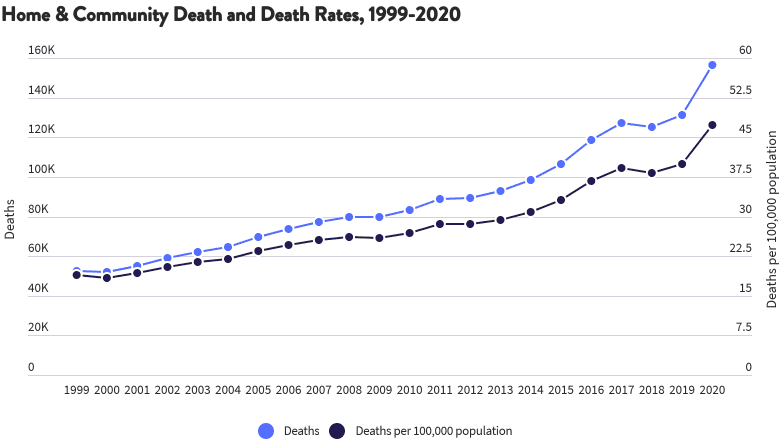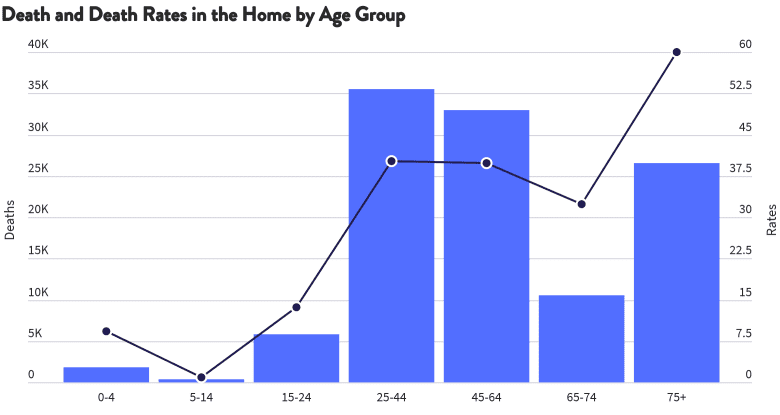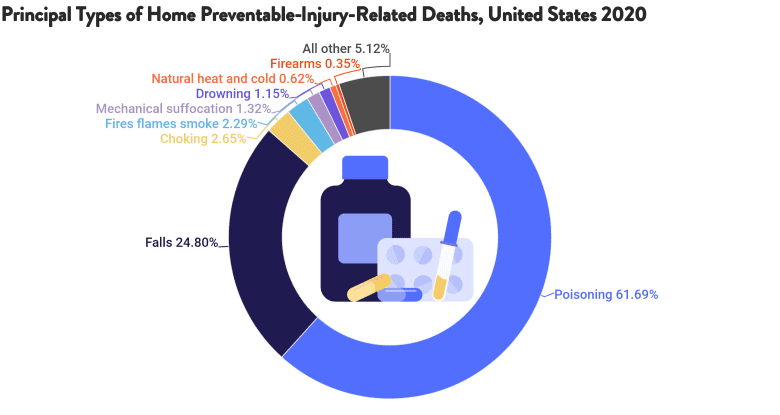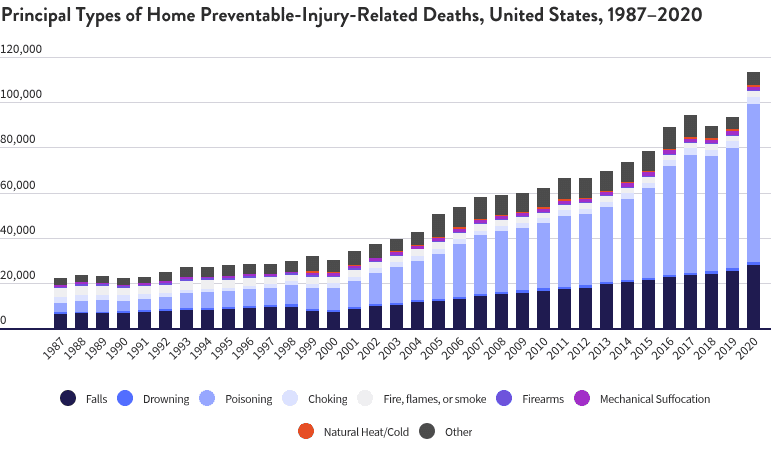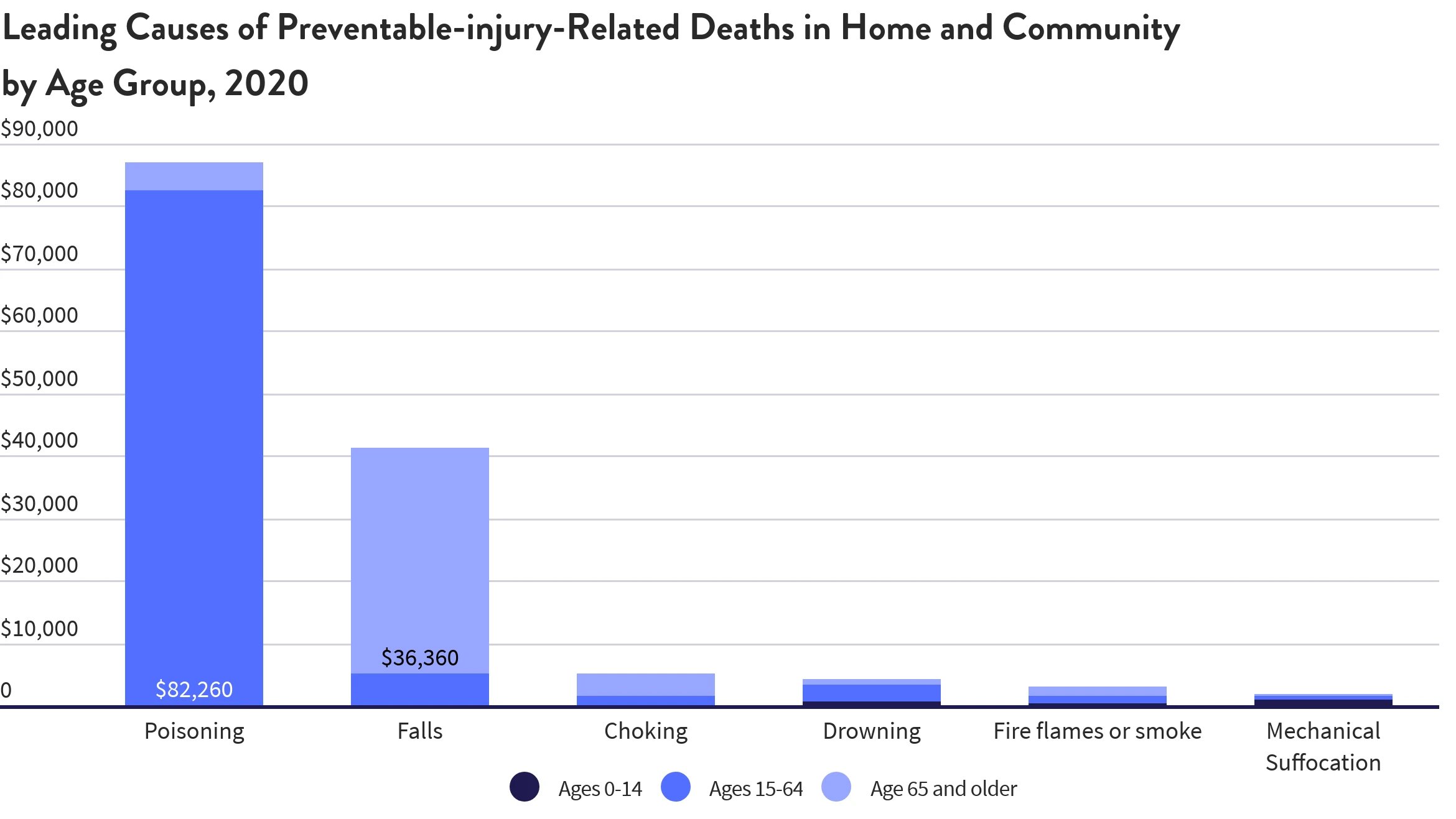Using the word accidental to describe injuries and death gives the impression that they were completely unforeseen and unavoidable. However, most of them are considered preventable — and, in 2020, according to the National Safety Council, there were 200,955 recorded cases. Of those, only 22% didn’t occur in homes or communities.
It becomes more concerning when we look at where accidental deaths and injuries happen. Only preventable injury-related deaths at work decreased from 2019 to 2020. Motor-vehicle, public and home deaths all increased. The latter sector had the highest jump — home deaths went up by 21.1% in 2020, according to the National Safety Council.















